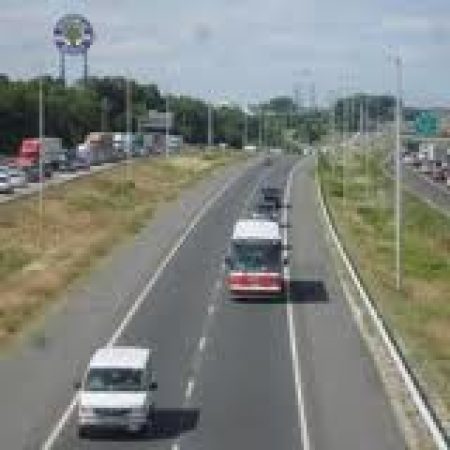 (This article first ran in Surface Transportation Innovations, a publication of the Reason Foundation.)Mention to a journalist charges based on vehicle miles of travel (VMT) or the more recent term, mileage-based user fees (MBUFs), and the immediate assumption is “a government-mandated GPS box in every vehicle, tracking everywhere you go.” That unfortunate image comes from some early proponents of the idea of charging per mile driven rather than by gallons of fuel consumed. They grandiosely conceived of a VMT charge as a do-everything mechanism: not only to replace declining fuel taxes as the principal funding source for roads but also to charge for congestion and to tax emissions and other negative externalities of motor vehicles and highways. The one-size-fits-all answer was a GPS box in every vehicle.
(This article first ran in Surface Transportation Innovations, a publication of the Reason Foundation.)Mention to a journalist charges based on vehicle miles of travel (VMT) or the more recent term, mileage-based user fees (MBUFs), and the immediate assumption is “a government-mandated GPS box in every vehicle, tracking everywhere you go.” That unfortunate image comes from some early proponents of the idea of charging per mile driven rather than by gallons of fuel consumed. They grandiosely conceived of a VMT charge as a do-everything mechanism: not only to replace declining fuel taxes as the principal funding source for roads but also to charge for congestion and to tax emissions and other negative externalities of motor vehicles and highways. The one-size-fits-all answer was a GPS box in every vehicle.
Oregon DOT was one of the first agencies to test a GPS box approach, back in 2007. Several hundred volunteer drivers had their cars temporarily outfitted with such a device, which uploaded their mileage at specially equipped gas pumps. While the system worked for recording and charging for miles driven—and did not “track” exactly where and when people drove—the fact that GPS was part of it fanned the flames of Big Brother surveillance fears.
But Oregon DOT has learned its lesson. It is kicking off a new pilot test this fall, based on a new vision. First, the system needs to be simple and offer motorists a choice of methods. Second, the system must be cost-effective, auditable, and protective of personal information. Third, it should build on what already exists in the marketplace. And fourth, the state’s role should be limited to things like setting standards, certifying approved private-sector applications, and deciding the level and structure of charges.
A detailed look at what ODOT is doing now is the article “Miles Ahead” in the April/May 2012 issue of Traffic Technology International, in which editor Nick Bradley interviews Jim Whitty of ODOT. The agency received numerous responses to its request for ideas from the private sector, and will use a number of those ideas in its modest new pilot program this fall. Instead of recruiting citizen volunteers, Whitty has taken the bold step of inviting “VIPs”—Oregon transportation commissioners, legislators sitting on transportation committees, etc.–to get them familiar with the new approaches and get their honest feedback.
There will be four basic alternatives in the new pilot test. The basic onboard unit will be a “dongle” that plugs into the vehicle’s diagnostic port and records only total miles driven. A second alternative will make use of existing systems such as Onstar that owners already have in their vehicles, which can report locations as well as miles. A third alternative will couple the dongle with a Bluetooth connection to a smart phone or tablet; this will enable users to distinguish between miles driven in-state (which will be charged for) and those driven out-of-state. The fourth category is aftermarket devices such as navigation units that can also report miles by location, if people choose to use them for that purpose.
And for those not wanting any MBUF technology in their vehicle, ODOT is planning a system by which people can buy miles in, say, 5,000 or 10,000-mile increments. “Over time, people will gravitate toward the easiest method [for them],” Whitty told editor Bradley. “Those who might be anti-technology now may move later to technologies such as a dongle for PAYD [pay as you drive], a smartphone, or a satnav system. [Or] they may decide to opt for a payment solution that allows them to drive and forget about the whole process operating in the background. We have to let that evolution happen.”
Whitty and his ODOT colleagues hope the trials will lead to legislation to put in place an initial MBUF system for electric cars and hybrids, so that green vehicles can pay their fair share of highway costs. As federal fuel economy mandates and fleet turnover lead to a doubling of average MPG over the next two decades, the need to charge the rest of the vehicle fleet per mile rather than per gallon will become more acute, generating political support for much broader use of MBUFs and the probable phase-out of fuel taxes. I think Oregon DOT has some good ideas, and I’ll be following their new trial with great interest.

Email this author






